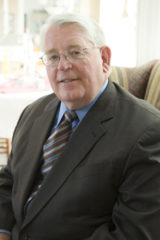
Senior Vice President
For the past 42 years, I have had the opportunity to work with a great number of Boards throughout the nonprofit sector: higher education, healthcare, culture and the arts, human services, etc. I have had many extraordinary experiences with a wide range of Boards” many functioning beautifully, some so-so and occasionally, well, some not so good.
If there is one organization I feel deserves special mention for its “best practices” in partnering with Boards, it would be The Salvation Army (also known as “the Army.”) Its Boards are well-organized, efficient, productive and consist of committed members who are wonderful supporters of one of our country’s most respected organizations. The Army refers to these Boards as Advisory Boards.
The Army is very careful to ensure its Boards are well organized and its members provided with the tools they will need to be successful as Army ambassadors within their respective communities.
One real advantage the Army has is its Organizational Manual for Advisory Organizations. It covers the full gamut of what is necessary to organize and run a successful Advisory Board. The Army urges its several hundred Boards throughout the United States to adhere to the policies and procedures laid forth within the Manual, thus promoting a consistency throughout the Advisory Board sector of the organization.
In addition, every four years, the Army organizes a three-day conference in which it brings together Advisory Board members from throughout the Army’s four territories for a time of further training and education, reflection, sharing and fellowship. Conferences involve fundraising professionals of great prominence as presenters and attract national celebrities such as Dallas Cowboys owner Jerry Jones (a significant supporter of the Army – do you recall Thanksgiving Day’s NFL game at AT&T Stadium?) and former First Lady Laura Bush. In addition, the Army’s National Commander attends, offering words of encouragement. Much is gained from these national gatherings and it is the Army’s hope that attendees will return to their respective communities renewed, inspired and motivated to assist the Army in its efforts of “Doing the Most Good.”
Army Advisory Boards are successful for a wide array of reasons. However, I believe that what is most responsible for their success is their committee organization and the unflinching willingness of members to carry out their responsibilities.
What I like most about Army Advisory Boards is their clarity in purpose, outlined in a member Job Description which ensures new Board members know exactly what the expectations are for joining an Army Board. Seldom if ever will you hear a Board member say “Well, I didn’t know I was expected to do that.”
Most Army Advisory Boards have all or most of the following committees:
Executive: consists of the Board officers and in most cases the chairs of the various committees. This ensures communication on the various activities is at the highest level.
Nominating: In my estimation, this is the most important committee on an Army Advisory Board. It is responsible for identifying prospective Board members, interviewing them in advance (during which full information such as Army literature, the job description, etc. is shared), making appropriate recommendations regarding new members, ensuring the slate of Board officers is advanced for approval per policy and holding annual evaluations of Board members including the review of meeting attendance, support of Army public functions, committee participation and financial support.
Finance: works closely with Army leadership to review all aspects of financial records and to provide professional expertise when needed.
Public Relations: works with Army staff in ensuring Army messaging is appropriately targeted and that the public has a clear understanding the Army is far more than just “bell ringing and thrift stores.”
Property: partners with Army leadership in reviewing all Army properties and make helpful suggestions on the best ways to address any issues.
Development: works closely with the Army’s development staff in identifying prospective new donors, setting up appointments with prospects, participating on visits and assisting Army staff in the planning, preparation and execution of fundraising special events.
The Army is also very good in encouraging non-Advisory Board members to serve on committees such as Public Relations, Development and Property. This is particularly attractive to the community member who cannot commit to full Board membership but wishes to assist in an area of his/her real interest and expertise.
Lastly, what always makes quite a difference in how successful a Board will be is when the organization’s executive takes an active interest in the work of the Board. In the Army’s case, the local commanding officer is always expected to attend not only regular Board meetings, but also committee meetings when his/her presence is requested. In my work with the Army over these many years, I have also found that the Army’s very best Boards are due in part to the commanding officer taking a personal interest in their Advisory Board members.
Remember: personal, little things can truly make a difference.
The following is a Job Description your organization may wish to utilize for Board members:
- Become fully informed about the programs and services of the organization and be committed to its mission
- Be as personally generous a financial contributor as possible and lead the organization to others who have the capacity to be financially supportive
- Serve as an ambassador for the organization within the community, utilizing your connections to access community resources and volunteers and enhance the image of the organization
- Identify those within the community who have influence and affluence and be a leader in recruiting them to the Board
- Attend Board meetings on a consistent basis and actively participate
- Actively serve on at least one Board committee
- Be willing to use your professional expertise as well as those you are professionally associated with for the betterment of the organization
- Be willing to perform a self-assessment of your performance as a Board member and make improvements where necessary


